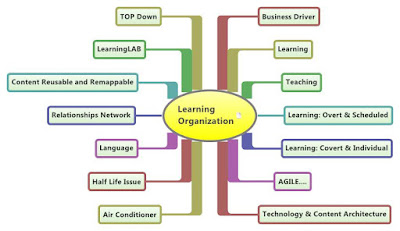What is Globalization?
The term globalization comes from English, as base of the
word ”globalization” which refers to the emerging of an international network,
belonging to an economical and social system.
Roland Robertson was
the first person who defined globalization as "the understanding of the
world and the increased perception of the world as a whole. Martin Albrow and
Elizabeth Kingdefine globalization as "all those processes by which the
peoples of the world are incorporated into a single world society.
Anthony Giddens uses the following definition: "the
globalization can be defined as the intensification of social relations throughout
the world, linking distant localities in such a way that local happenings are
formed as a result of events that occur many miles away and vice versa.
Globalization can be linked to the local, the national and
the regional. On the one hand, a connection is made between social and economic
relationships and networks, organized on a local and / or national, on the
other hand, it connects social and economic relationships and networks
crystallized on wider scale the regional and global interactions.
Globalization speeds up the competition for efficiency in
production market. Under the pressure of competition, one of the main changes
is innovation in the workplace and therefore firms were increasingly became
commit to seek productive work organization (Chaykowski & Giles, 1998). As
firms become more engaged in globalization process, a parent firm will need to
innovate to survive. At the end, international workplaces will choose a high performance
HR practices designed to encourage workers to commit (Walsworth & Verma,
2007).
To improve a quality of production, for instance, management have to
have unique skill to satisfy customers and thus, employers focus on job
training, multi-skill and employee’s involvement such as quality circle,
autonomous team. Under the functional human resource management, compensation
was based primarily on seniority, yet competition has encouraged performance
based payment system. Promotion was also tightly linked to individual
performance.
On the other hand, at the heart of managerial strategy focusing in
high performance work system is individual involvement and trustworthy
relationships (Spreizer et al, 1999). Therefore, employers emphasizes on open
communication and effective grievance system in the workplace.
Video 1: Globalization and HRM
Key aspects of Globalization
Containerization
The costs of ocean shipping have come down, due to containerization,
bulk shipping, and other efficiencies. The lower unit cost of shipping products
around the global economy helps to bring prices in the country of manufacture
closer to those in export markets, and it makes markets more contestable
globally.
Technological change
Rapid and sustained technological change has reduced the
cost of transmitting and communicating information – sometimes known as “the
death of distance” – a key factor behind trade in knowledge products using web
technology.
Economies of scale
Many economists believe that there has been an increase in
the minimum efficient scale (MES) associated with some industries. If the MES
is rising, a domestic market may be regarded as too small to satisfy the
selling needs of these industries. Many emerging countries have their own
transnational corporations.
Differences in tax systems
The desire of businesses to benefit from lower unit labor
costs and other favorable production factors abroad has encouraged countries to
adjust their tax systems to attract foreign direct investment (FDI). Many
countries have become engaged in tax competition between each other in a bid to
win lucrative foreign investment projects.
Less protectionism
Old forms of non-tariff protection such as import licensing
and foreign exchange controls have gradually been dismantled. Borders have
opened and average import tariff levels have fallen.
That said, it is worth knowing that, in the last few years,
there has been a rise in non-tariff barriers such as import quotas as countries
have struggled to achieve real economic growth and as a response to persistent
trade and current account deficits.
Growth Strategies of Transnational and Multinational Companies
In their pursuit of revenue and profit growth, increasingly
global businesses and brands have invested significantly in expanding
internationally. This is particularly the case for businesses owning brands
that have proved they have the potential to be successfully globally,
particularly in faster-growing economies fueled by growing numbers of middle
class consumers.
References
- Heung-Jun Jeong (2012) The Effect of Globalization on Human Resource Management, Unions and Flexibility in South Korea , Available at: http://ilera2012.wharton.upenn.edu/RefereedPapers/JeongHeungJun.pdf (Accessed: 26th September 2018).
- Jim Riley (2017) Factors That Have Contributed to Globalisation, Available at: https://www.tutor2u.net/business/reference/factors-that-have-contributed-to-globalisation(Accessed: 26th September 2018).
- Sandu CUTERELA (2012) Globalization: Definition, Processes and Concepts, Available at: http://www.revistadestatistica.ro/suplimente/2012/4/srrs4_2012a22.pdf (Accessed: 26th September 2018).
- Video 1 :Globalization and HR[Online] available at: https://www.youtube.com/watch?v=kqr8r8r95x0&t=90s [Accessed on: 26th September 2018].









